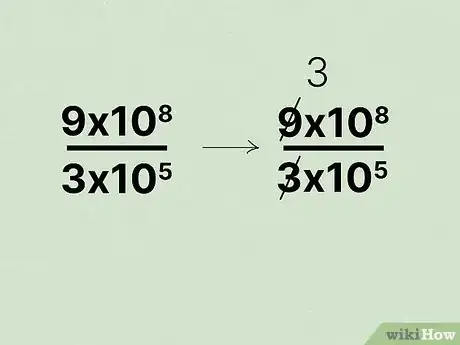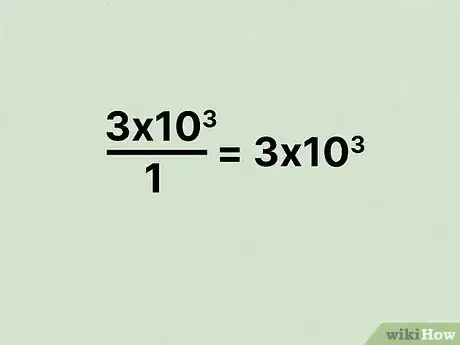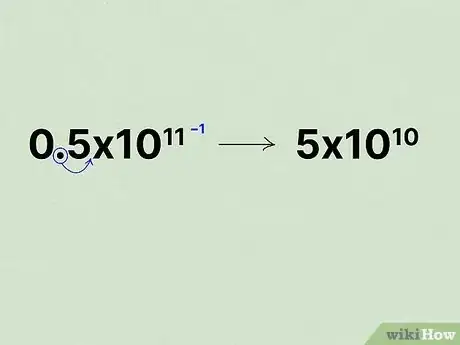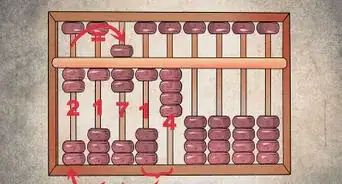This article was co-authored by wikiHow staff writer, Hannah Madden. Hannah Madden is a writer, editor, and artist currently living in Portland, Oregon. In 2018, she graduated from Portland State University with a B.S. in Environmental Studies. Hannah enjoys writing articles about conservation, sustainability, and eco-friendly products. When she isn’t writing, you can find Hannah working on hand embroidery projects and listening to music.
This article has been viewed 4,102 times.
Learn more...
When you’re learning about scientific notation, you’ll probably come across a division question sooner or later. Fortunately, since numbers with the same base can be divided easily, dividing scientific notation only takes a few extra steps. In this article, we’ll walk you through dividing scientific notation and give you some helpful examples along the way.
Things You Should Know
- Divide the whole numbers, then use the rule of exponents to divide the bases.
- If the new coefficient is a whole number, multiply the number by the new power of 10 to get your solution.
- If the new coefficient is not a whole number, convert it to scientific notation before multiplying it by the new power of 10.
Steps
References
- ↑ https://janus.astro.umd.edu/astro/scinote/help.html
- ↑ https://www.edinformatics.com/math_science/division-in-scientific-notation.html
- ↑ https://flexbooks.ck12.org/cbook/ck-12-interactive-middle-school-math-8-for-ccss/section/9.8/primary/lesson/multiplying-dividing-numbers-in-scientific-notation-msm8-ccss/
- ↑ https://www.edinformatics.com/math_science/division-in-scientific-notation.html











































































